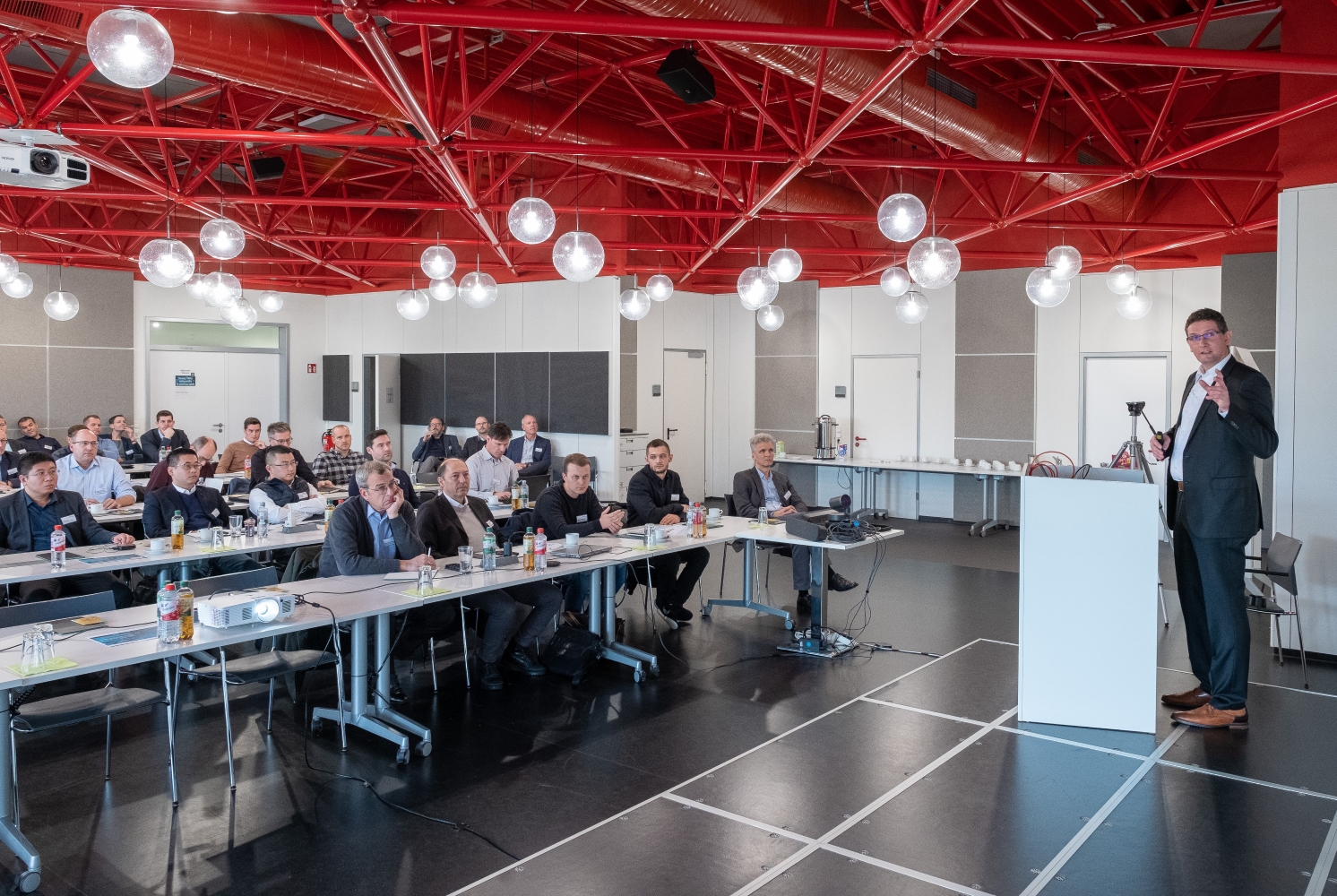ZWARP Users Conference, biaxial testing, wheels an hubs
Taking the road to the lab: Users deliberate upon biaxial fatigue strength tests for passenger car and truck wheels and hubs
In recent years there have been major changes in the life cycle testing of vehicles or individual components: Thanks to state-of-the-art testing technology today a few hours in the laboratory are sufficient for life cycle testing whereas previously test drives on the road taking a couple of weeks were necessary for this purpose. This development continues as the UC 16 -Users Conference on Biaxial Wheel/Hub Fatigue Testing on November 8th, 2023, in Darmstadt showed. More than 50 scientists and users from Europe and all around the world met at the Fraunhofer Institute for Structural Durability and System Reliability LBF in Darmstadt. Thanks to a wide range of development and testing activities in the field of wheel testing and approval, the institute was able to establish itself as a technology leader. Today the testing technology is known and accepted on a worldwide basis. It has been established as the international standard for more safety in vehicle wheels construction. Besides it shortens the development times for new reliable and safety relevant products.

The 16th Users Conference on Biaxial Fatigue Testing with scientists, manufacturers of passenger cars and commercial vehicles as well as suppliers was dedicated to various anniversaries. The biennial user conference itself has been in existence for 30 years now. Furthermore, the organizing Fraunhofer LBF celebrated its 85th anniversary in 2023, and the ZWARP technology has been around for over 40 years.
New findings of multiple impact factors for BiAx wheel testing
The international meeting, organized by the Fraunhofer–scientists, is known as a forum to discuss new developments in the market for testing and validation technologies with industry experts. Due to the different anniversaries and the missed conference two years ago due to Corona, this year's conference was a good occasion to meet by a face-to-face meeting for exchange of ideas concerning several questions: In which direction will the technology and the conference develop, what are the future requirements of this technology and why is it beneficial to further develop the biaxial fatigue tests after so many years of application? An active discussion among the participants, guest contributions from partners who had only recently begun to use the ZWARP technology and from partners who have been using it since its introduction provided the required answers. A contribution on the impact factors of load files such as wheel size, wheel design, tires, vehicle application and vehicle usage arouse particular interest. The discussion of the general development of the conference gave fruitful feedback and other forms like workshops and online forum were suggested. A community wide committee is planned to prepare the next conference.
ZWARP technology: efficient wheel development for more than 40 years
The Fraunhofer LBF is considered as the pioneer in the multi-axial life cycle testing of vehicle wheels and wheel hubs. In 1982, scientists at the institute put the biaxial wheel/hub test rig (ZWARP) into operation for the first time. At that time, it was a novel device for examining vehicle wheels under biaxial load. In 1982 a patent for road vehicles and in 1987 a patent for rail vehicles were filed and these technologies were subsequently sold under license to customers. At www.zwarp.fraunhofer.de/en.html Fraunhofer LBF created a website with in-depth information about biaxial wheel/hub testing (ZWARP). Today, wheel road simulators of this type are used on a worldwide basis to shorten development times in the automotive industry and to test safety components such as wheels and wheel hubs.
- PDF-file of press release
- More information about ZWARP-Technology (zwarp.fraunhofer.de)
Last modified:
 Fraunhofer Institute for Structural Durability and System Reliability LBF
Fraunhofer Institute for Structural Durability and System Reliability LBF